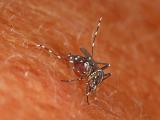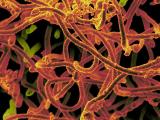Mar 8, 2004 (CIDRAP News) The dengue fever epidemic in Indonesia continues to spread, with almost 400 deaths and more than 26,000 cases since January 1, according to a number of news sources. Dr. Rita Kusriastuti, an official with the Indonesian Ministry of Health, said that more than 390 people had died of the mosquito-borne disease and that at least 30 of 32 provinces had reported cases, according to an Agence France-Presse (AFP) story today.
The Indonesian government has disbursed 50 billion rupiah ($5.9 million) for actions to control the outbreak and it is telling hospitals not to charge dengue fever patients for treatment, AFP reports. The number of cases this year is running at more than twice last year's toll.
Results of blood testing to determine whether this year's strain is new are still awaited. However, the World Health Organization's (WHO's) representative in Indonesia, Georg Peterson, said WHO does not expect that to be the case, according to a Reuters story.
Public education programs, including television advertisements and loudspeakers on vans, are telling people how to protect against and control the disease. The main action to be taken is cleanup of potential mosquito breeding spots such as standing water in puddles and in containers in and around homes. Spraying efforts are being pursued. For example, a large fogging operation was carried out yesterday in Surabaya through a cooperative effort of Sampoerna, a large cigarette company, and the Association of Indonesian Plant Disease Management Companies, according to Antara, the Indonesian national news agency.
Government officials claim no effect on Indonesian tourism, says a Jakarta Post report. Nearby countries are on the alert, however. China has ordered temperature checks of all passengers arriving from Indonesia, and ships and containers arriving from there are to be checked and to submit mosquito-free certificates upon entry, according to the Xinhuanet news service.
Dengue fever is a flu-like illness characterized by headaches, rashes, cramps, and back and muscle pain. Symptoms last about 2 weeks, and the disease can be fatal if supportive treatment is delayed. Dengue hemorrhagic fever, a potentially deadly complication, is characterized by high fever; hemorrhagic phenomena, often with enlargement of the liver; and in severe cases, circulatory failure. Dengue spreads mainly during the rainy winter season in tropical and sub-tropical areas. This year's rainy season has been slightly delayed, hitting early this year instead of late last year.
See also:
Feb 27 CIDRAP News story on the outbreak, with links to further resources
http://www.cidrap.umn.edu/cidrap/content/bt/vhf/news/feb2704dengue.html





















